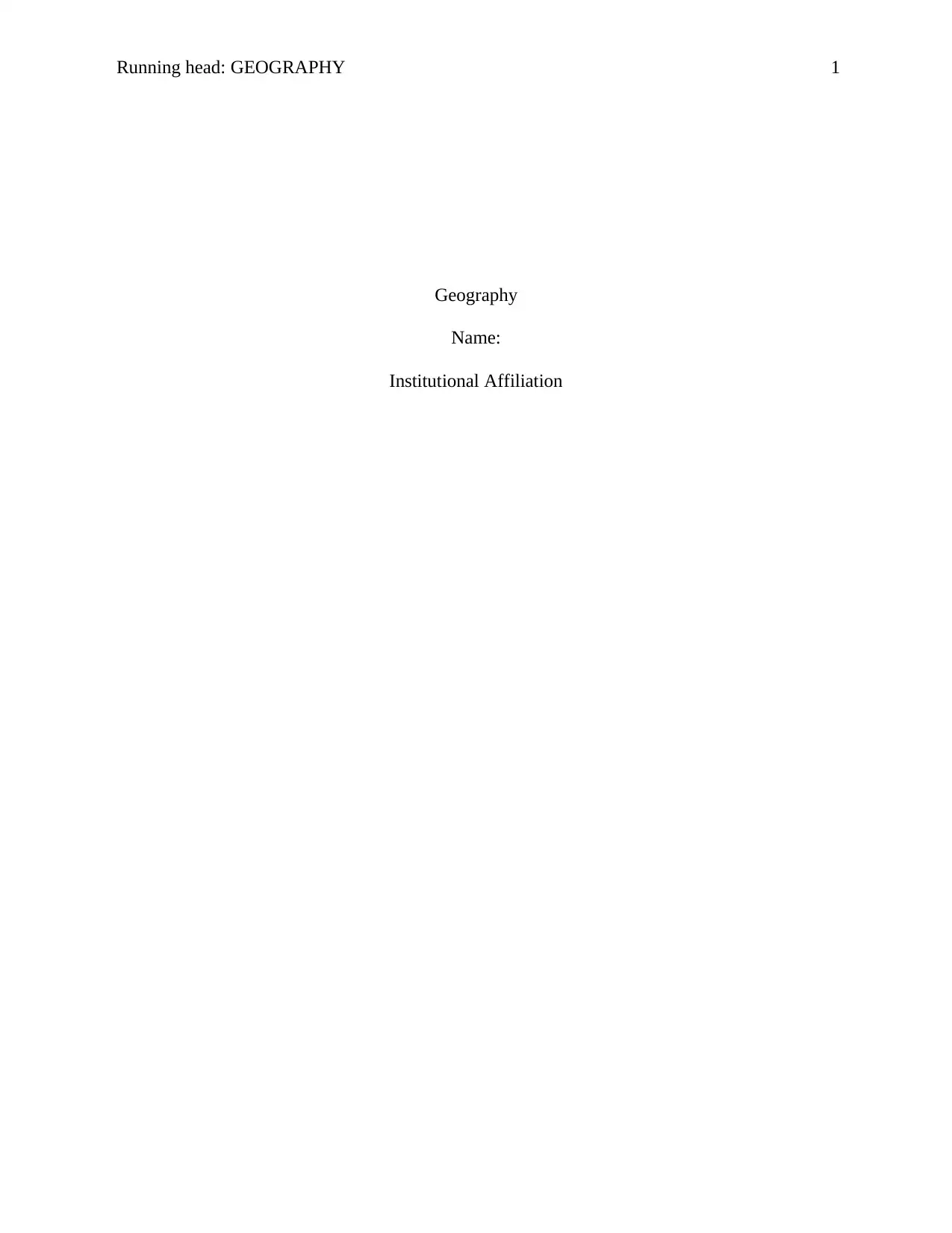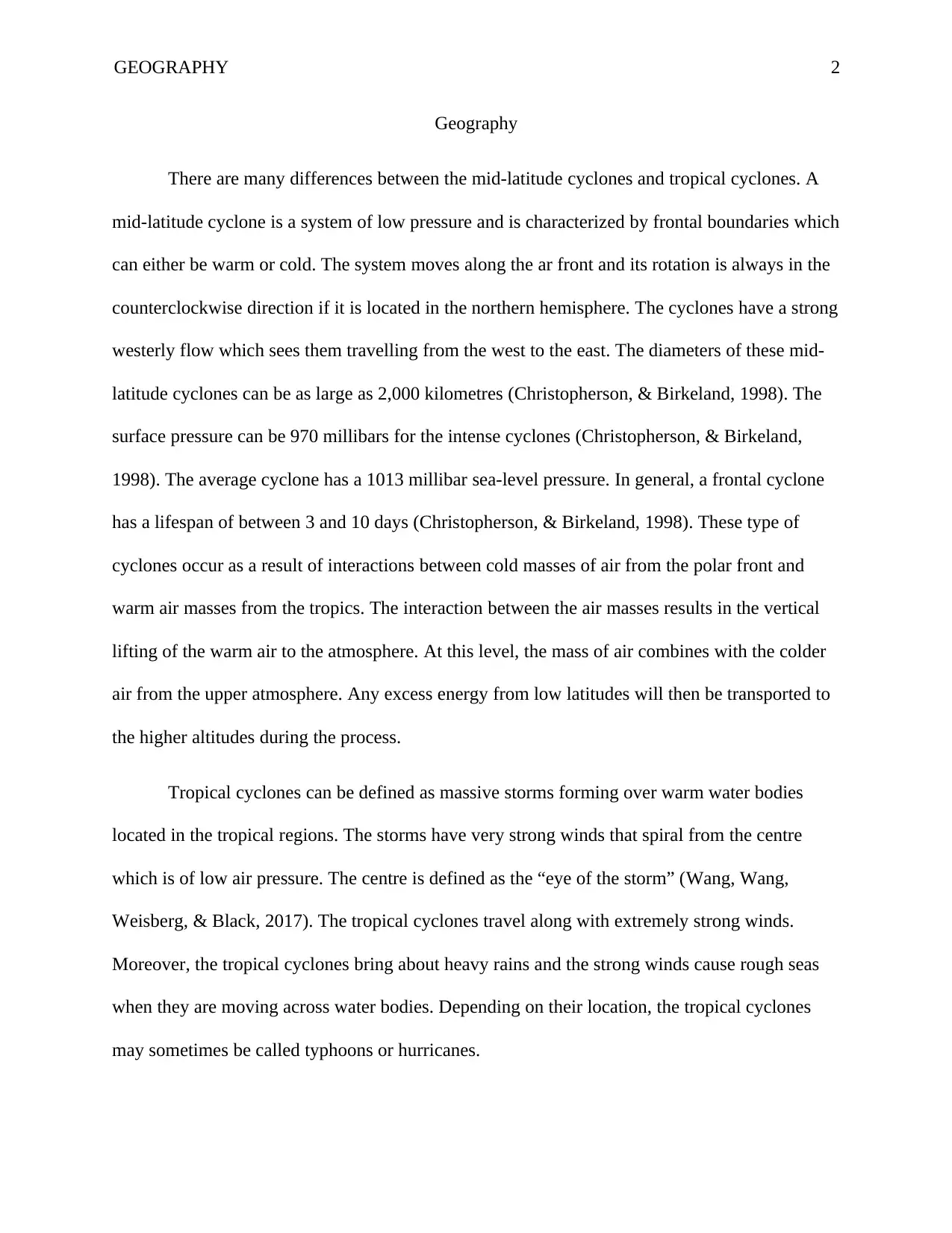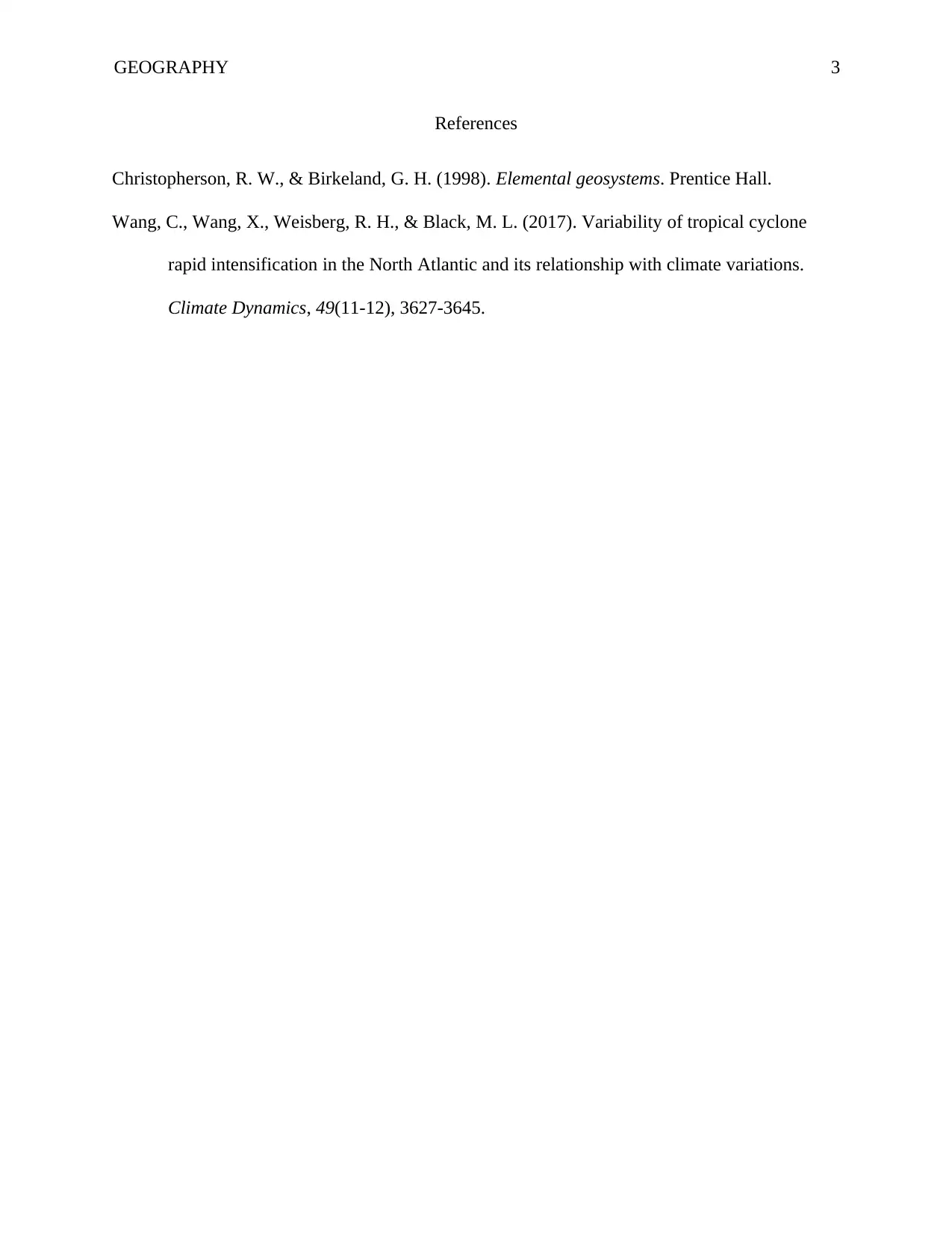A Comparative Analysis of Mid-Latitude and Tropical Cyclones
VerifiedAdded on 2022/08/12
|3
|431
|22
Report
AI Summary
This report provides a comparative analysis of mid-latitude and tropical cyclones. It explores the key differences between these weather phenomena, including their formation processes, characteristics, and geographical distribution. The report discusses the role of frontal boundaries in mid-latitude cyclones, detailing their interaction with air masses and the resulting weather patterns. It also examines the nature of tropical cyclones, highlighting their association with warm water bodies, strong winds, and the “eye of the storm.” Furthermore, the report provides a comprehensive overview of their impacts, referencing relevant studies and providing a clear understanding of these powerful atmospheric systems. The analysis includes detailed information on the pressure systems, wind patterns, and associated weather events, providing a thorough comparison of the two types of cyclones.
1 out of 3







![[object Object]](/_next/static/media/star-bottom.7253800d.svg)